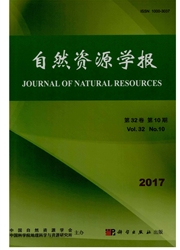

 中文摘要:
中文摘要:
在气候变暖背景下,西北干旱区气候资源变化如何影响农业是该区农业应对气候变化研究的前提与基础。论文根据西北干旱区1961—2007年77个气象站点均一化气温数据和日照时数数据,采用5 d滑动平均和线性倾向估计方法,分析了各农业气候指标的时间变化特征与区域差异。研究表明,霜冻日、暖日、生长期、无霜期、≥0℃与≥10℃活动积温的变化趋势显著且区域特色鲜明。暖日、生长期、无霜期变化呈显著上升趋势,其多年平均值空间分布主要表现为"南高北低"的特征,而霜冻日则相反;≥0℃、≥10℃的活动积温亦呈明显增加趋势(增长率分别为80℃.d/10 a、77℃.d/10 a),且可分为6个空间差异显著的活动积温特征区域。农业气候资源变化对西北干旱区农业生产影响利弊各兼。一方面,干旱区热量资源得以改善,作物生育期延长,天然植被气候生产力显著增加[增长率为15.6g/(m2.10 a)];另一方面,干旱区热害与冷害等极端气温事件增加,光照资源显著减少,水资源严重缺乏和分布不均,这造成了农业生产的不稳定性增加。
 英文摘要:
英文摘要:
It is the precondition and foundation to explore the impact of climate warming on agricultural climate resources in the Arid Region of Northwest China(ARNC) for researches on the adaptation of agricultural production to climate change.Based on daily homogenization temperatures during 1961 to 2007 from 77 weather stations in the ARNC,the spatio-temporal variation characteristics of various agro-climatic indicators were analyzed by using the methods of five-day sliding average and the linear trend estimation.The results revealed that frost days(FD),warm days(WD),the length of growing season(GSL),the frost-free period(FFP) and the active accumulated temperatures above 0 ℃ and 10 ℃(CT0,CT10) had changed significantly and exhibited remarkable regional differences.WD,GSL and FFP increased with an obvious upward trend,and the spatial distribution of their multi-year average values revealed higher values in the southern parts than that in the northern ones,which was contrary for FD.During the 47-year study period,CT0 and CT10 was characterized by significant increasing rate at 80.0 ℃·d/10 a and 77.0 ℃·d/10 a,respectively,with six obvious different sub-regions in active accumulated temperatures for the whole ARNC.The agricultural climate resources in the ARNC had changed significantly,which had both positive and negative impacts on agricultural production.On the one hand,the thermal resources improved in the ARNC,resulting in an extending of the crop growing periods,and the increasing of plant climate productivity at a rate of 15.6 g/(m2·10 a).On the other hand,the extreme weather and climate events such as heat and chilling injuries occurred with an accelerating frequency and an enlarging intensity,which would increase the instability of agricultural production.Thus,it is essential to use the agro-climatic resources reasonably in order to cope with and adapt to the impacts of climate change on agricultural production in the ARNC.
 同期刊论文项目
同期刊论文项目
 同项目期刊论文
同项目期刊论文
 期刊信息
期刊信息
